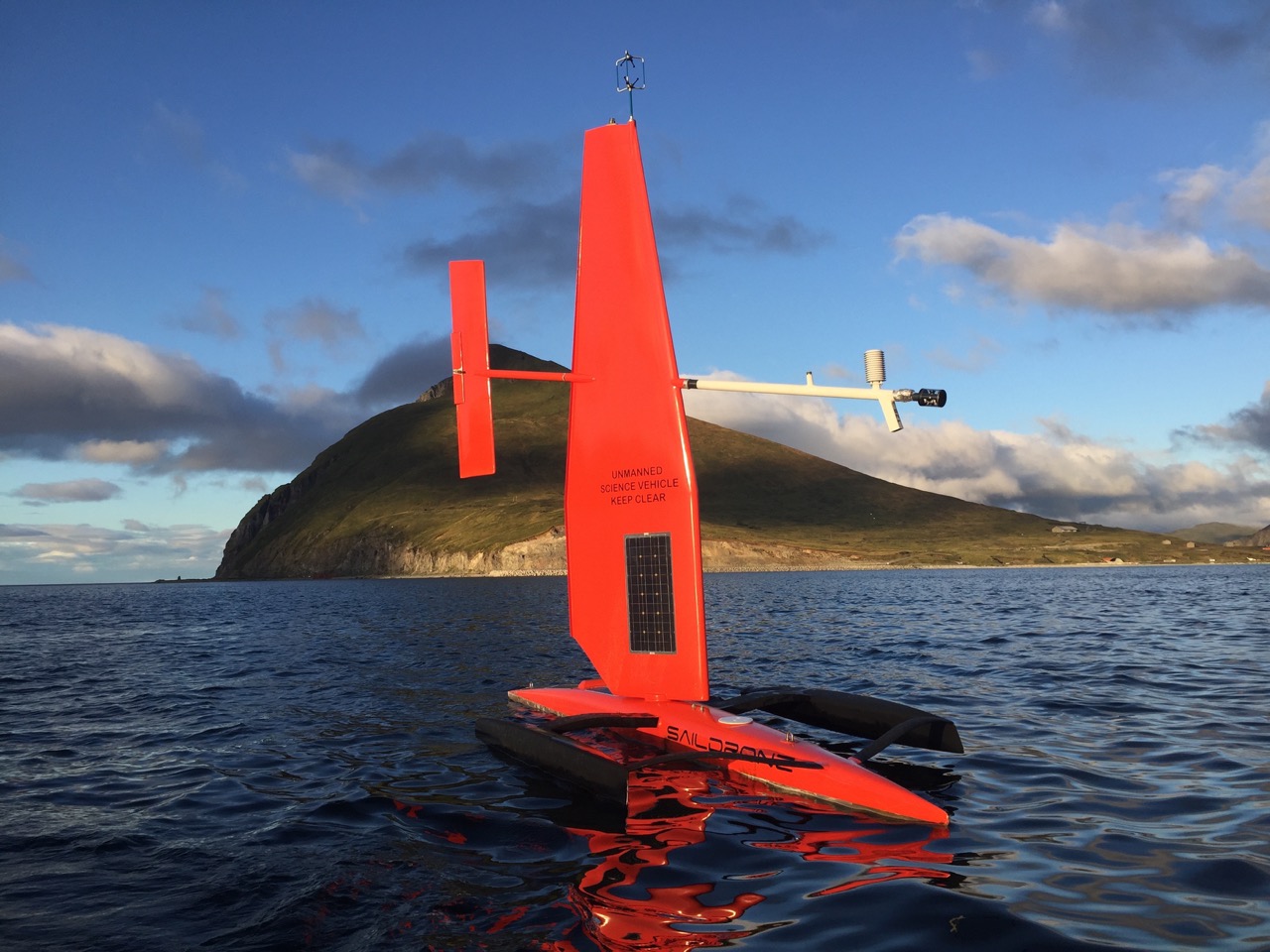Autonomous Vehicles
Sail Drone
Location: Bering Sea and Arctic Ocean. Deployed from Dutch Harbor, using Kotzebue Sound and Icy Cape/Wainwright as holding areas. Priority locations for research will be (1) Hanna Shoal, (2) off the continental shelf, (3) Barrow Canyon, and (4) Beaufort Shelf. However route planning is ice and weather dependent and subject to change.
Timeline: July – Sept., 2017
Instrumentation: ASVCO2 system
Description: During summer of 2017, PMEL will conduct two Autonomous Surface Vehicle (ASV) deployments in the Bering Sea and Arctic Ocean. The project involves four research groups working directly on two projects to cooperatively use ASVs to assay physical influences on CO2 fluxes on the continental shelf and slope of the Chukchi Sea and in the adjacent Canada Basin. Recent sea ice losses already have and are likely to continue to modify the physics, biogeochemistry, and ecology of the Arctic Ocean in ways that are not yet fully understood, particularly with respect to ocean acidification. However, carbon system and biogeochemical data is notoriously limited in this area. New breakthroughs in autonomous research capabilities are providing the technological advancement necessary to fully survey this important, changing area.
Partners: NOAA/PMEL Innovative Technology for Arctic Exploration; NOAA/PMEL Engineering and Development; NOAA/PMEL Carbon Program; NOAA Arctic Research Program
Gliders
None this year

